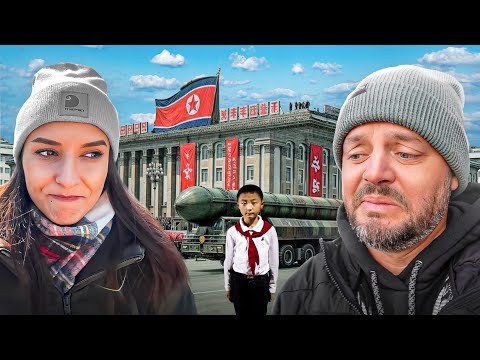North Korea is known as one of the most isolated and mysterious countries in the world. With a 76-year history of isolation and strict control of information and access to foreigners, the country attracts attention for its totalitarian policies and nuclear program. So a travel experience in North Korea can be an intriguing one, but also full of challenges and unexpected discoveries. On this day of travel, visits to schools, orphanages or school uniform factories reveal many aspects of the daily lives of the people of North Korea, giving us a unique and sometimes shocking insight into the realities of this country.
Video Credits: HaiHui in two
North Korea: a controversial tourist destination marked by a tumultuous history and a totalitarian political regime. However, there are a few attractions that can capture the attention of those curious to discover this isolated country.
I. Attraction Points:
- Pyongyang: North Korea's capital, a city with grand architecture and a clear whiff of regime propaganda.
- Northern Wall: An impressive construction on the border between North and South Korea.
- Statue of Kim Il Sung: Monument imens dedicat „eternului lider” al Coreei de Nord.
- Mount Paektu: An active volcano, considered the symbolic birthplace of the Korean nation.
- Victory Museum: O colecție de artefacte care celebrează „victoriile” regimului nord-coreean.
- Kumgangsan Nature Reserve: A picturesque area with spectacular mountain scenery.
- Socialist architecture: Buildings and ensembles built in the characteristic style of the communist regime.
- Juche Archives: A place where tourists can learn more about North Korean ideology.
- Monumental Statue of Kim Il Sung and Kim Jong Il: Another impressive construction dedicated to North Korean leaders.
- Pyongyang Zoo: A green oasis in the middle of the city with exotic and rare species.
II. History and Traditions:
- Heritage of the Joseon Empire: A landmark period in Korean history.
- Korean WarA major conflict that has profoundly marked the modern history of the peninsula.
- Isolation policy and personality cult: The defining elements of the totalitarian regime in North Korea.
III. Geography and adventures:
- Sea of JapanAn important source of resources and a crucial point for regional relations.
- Mountain areas and rivers: Opportunities for eco-tourism and nature adventures.
- Border with South Korea: A symbol of the division of the peninsula, but also of the potential for reunification.
IV. Culture and Gastronomy:
- Folk dances: A form of artistic expression with traditional and modern influences.
- Ceramics and textiles: Traditional artifacts reflecting the artistic skills of the Korean people.
- North Korean cuisine: Simple but delicious dishes that reflect local resources and culture.
V. Transportation and Accessibility:
- Limited access: North Korea's restrictive regime imposes strict rules for tourists.
- Public transport: Developing transportation systems, but with limitations for foreigners visiting the country.
- International flights: Limited but existing connections for those keen to get to North Korea.
- Transco Korean Train: An interesting way to cross the border between the two Koreas.
- Organized trips: The most common way to visit North Korea, with accredited guides and pre-planned routes.
În concluzie, Coreea de Nord este o destinație turistică unică și inedită, care poate oferi o perspectivă fascinantă asupra unei societăți extrem de diferite. Cu toate provocările și restricțiile impuse de regimul politic, această țară continuă să fascineze și să intrigue pe cei curioși să exploreze tărâmul „ermit” al Peninsulei Coreene.
Destinație turistică – Coreea de Nord

